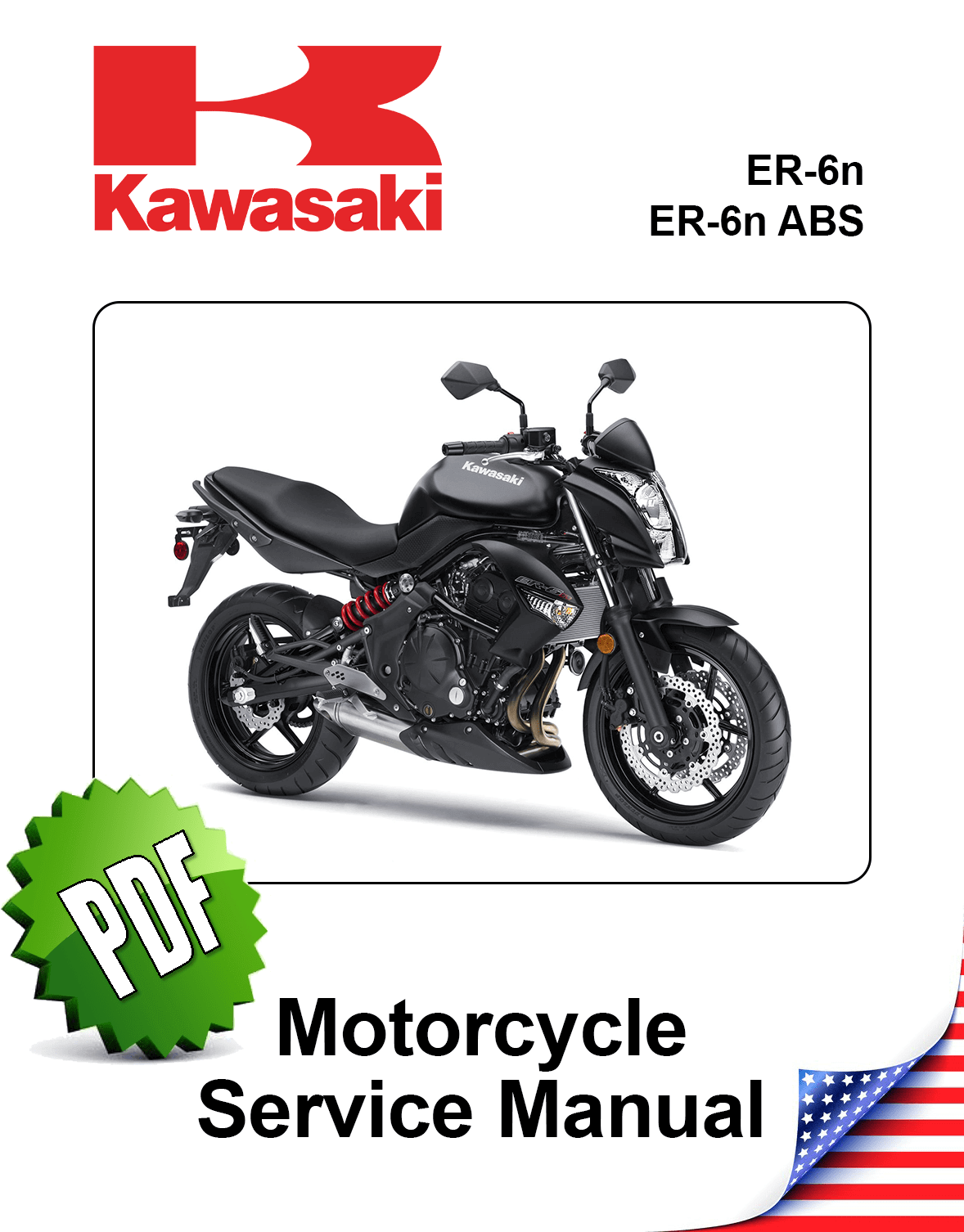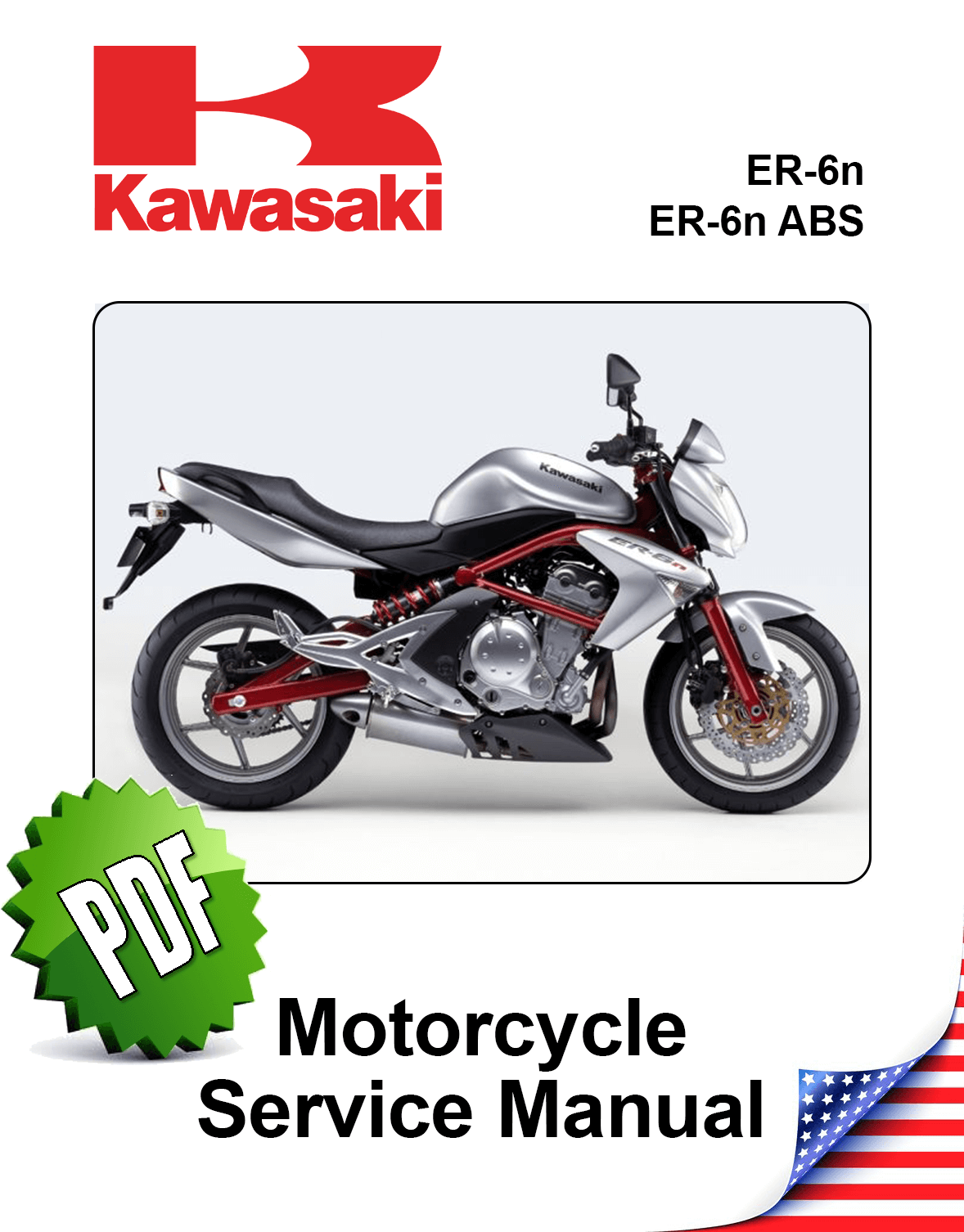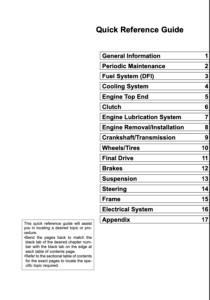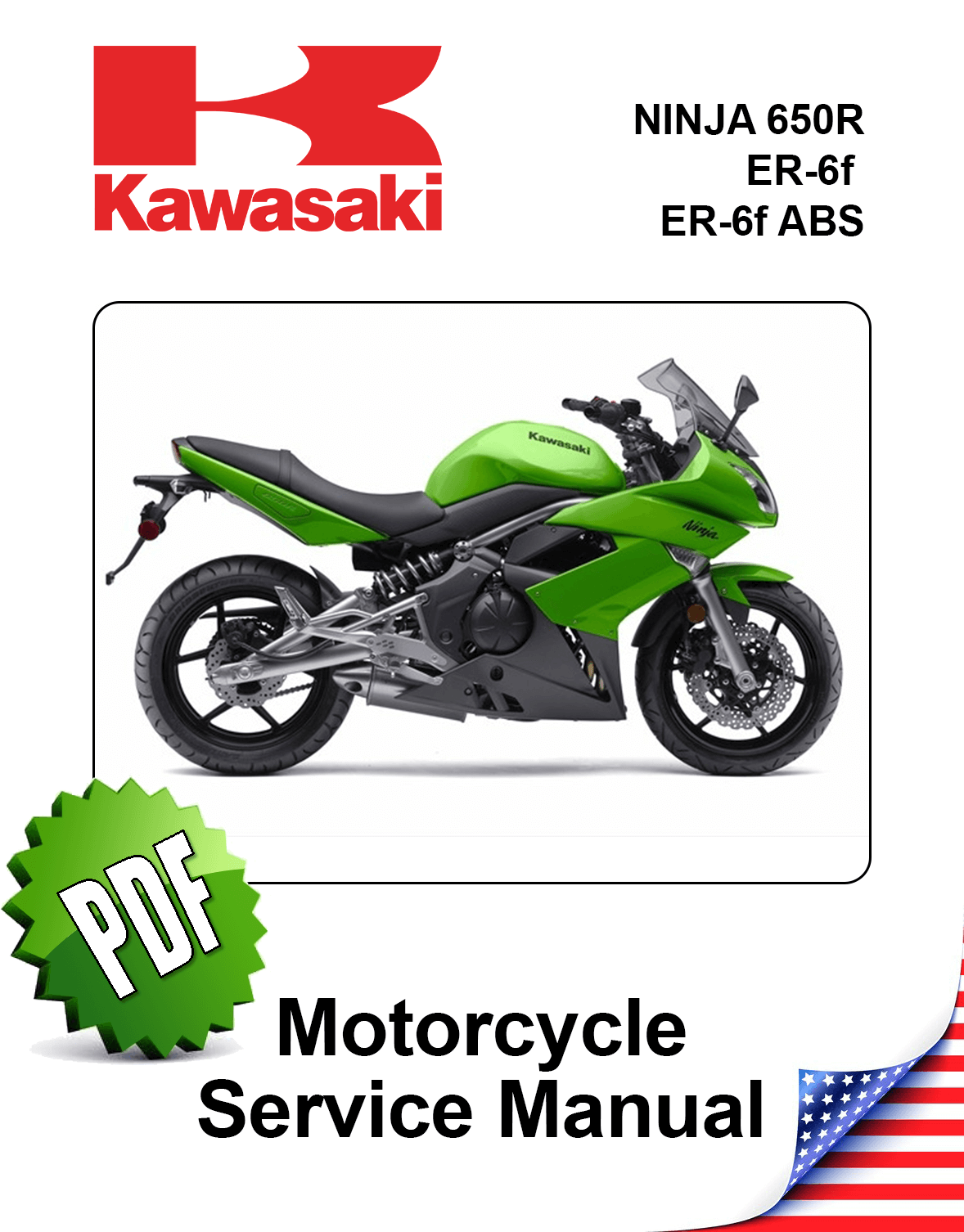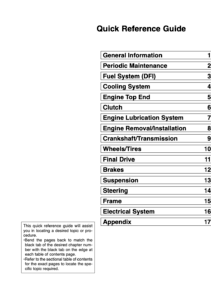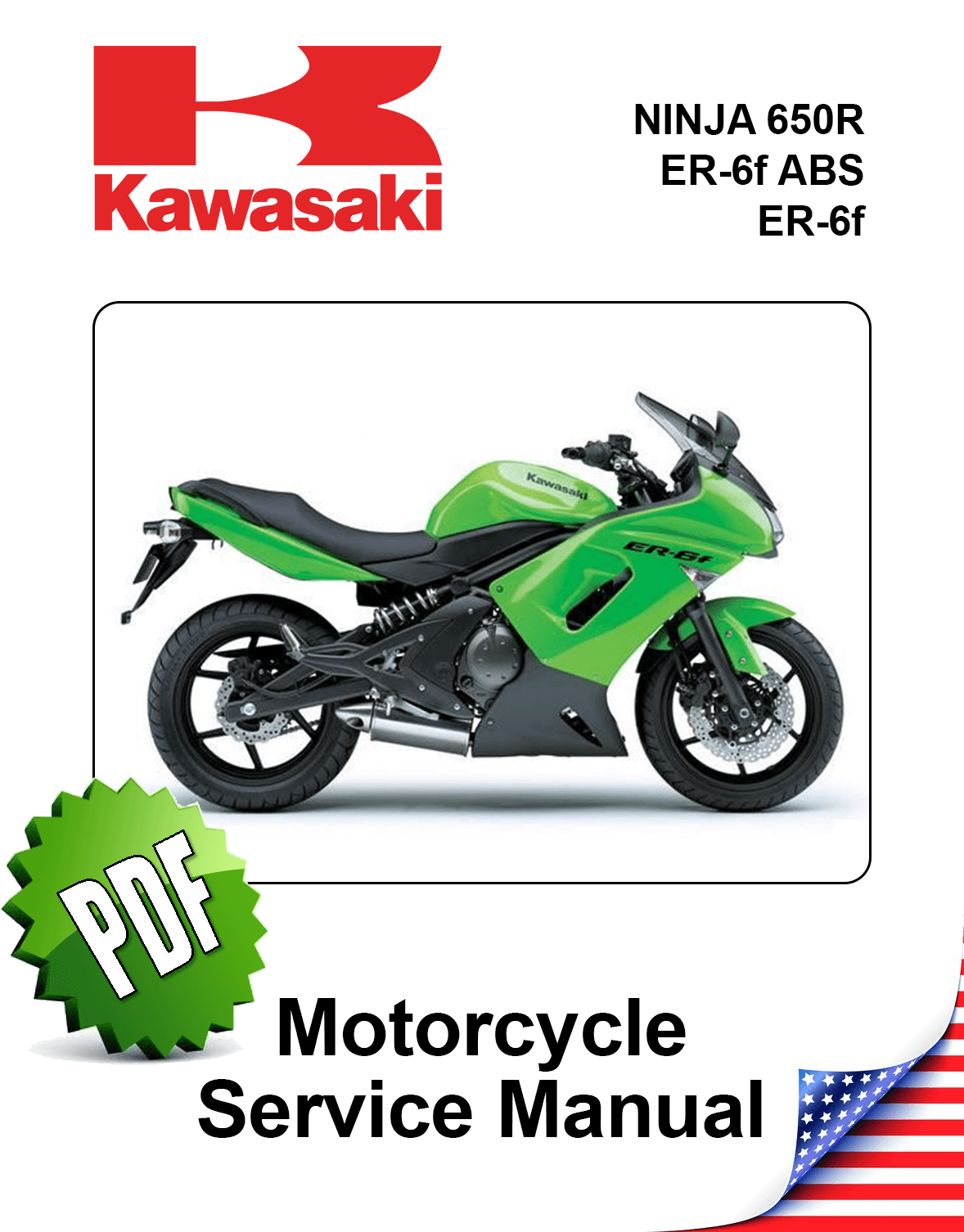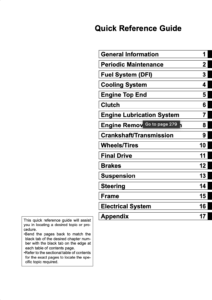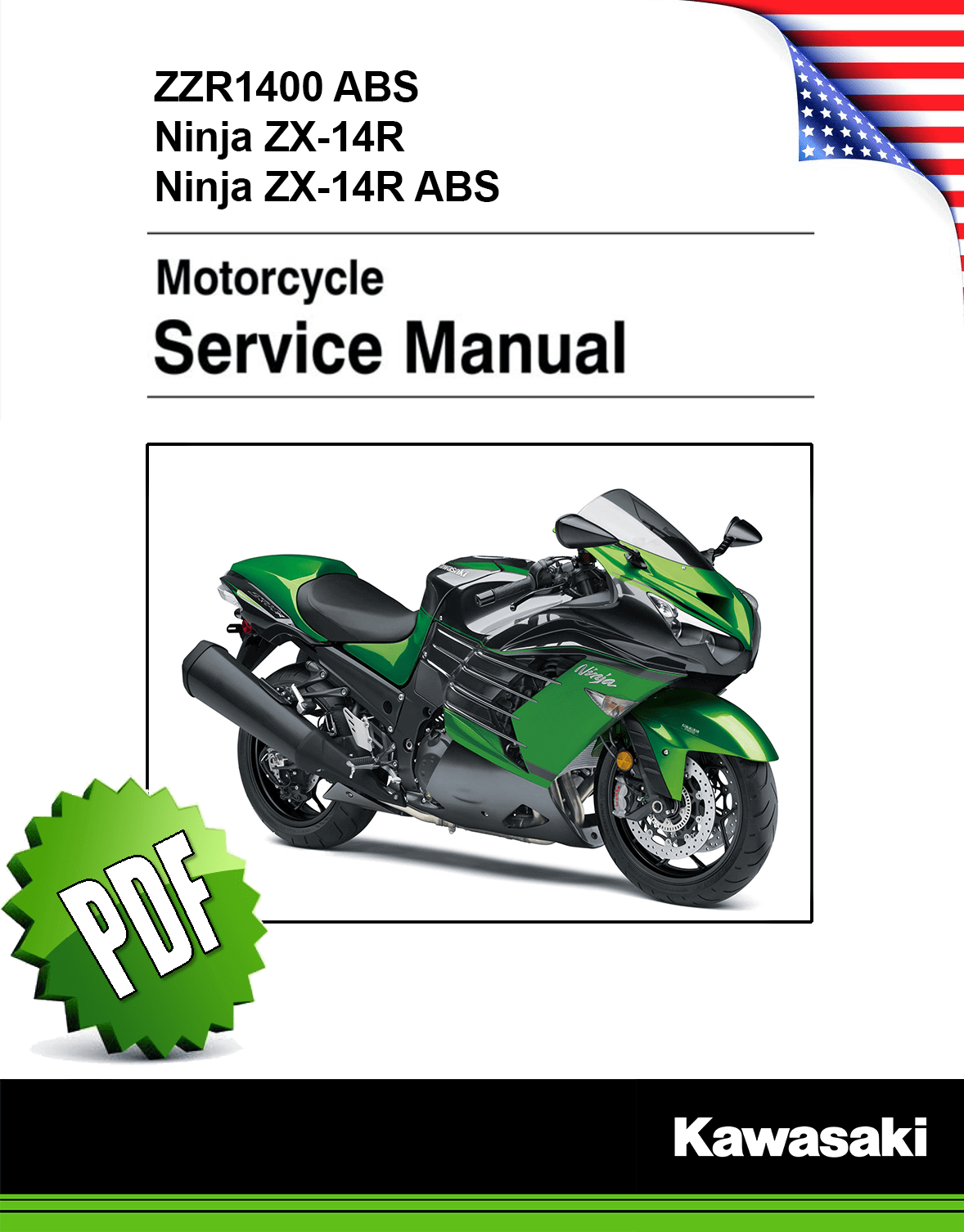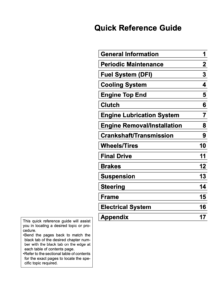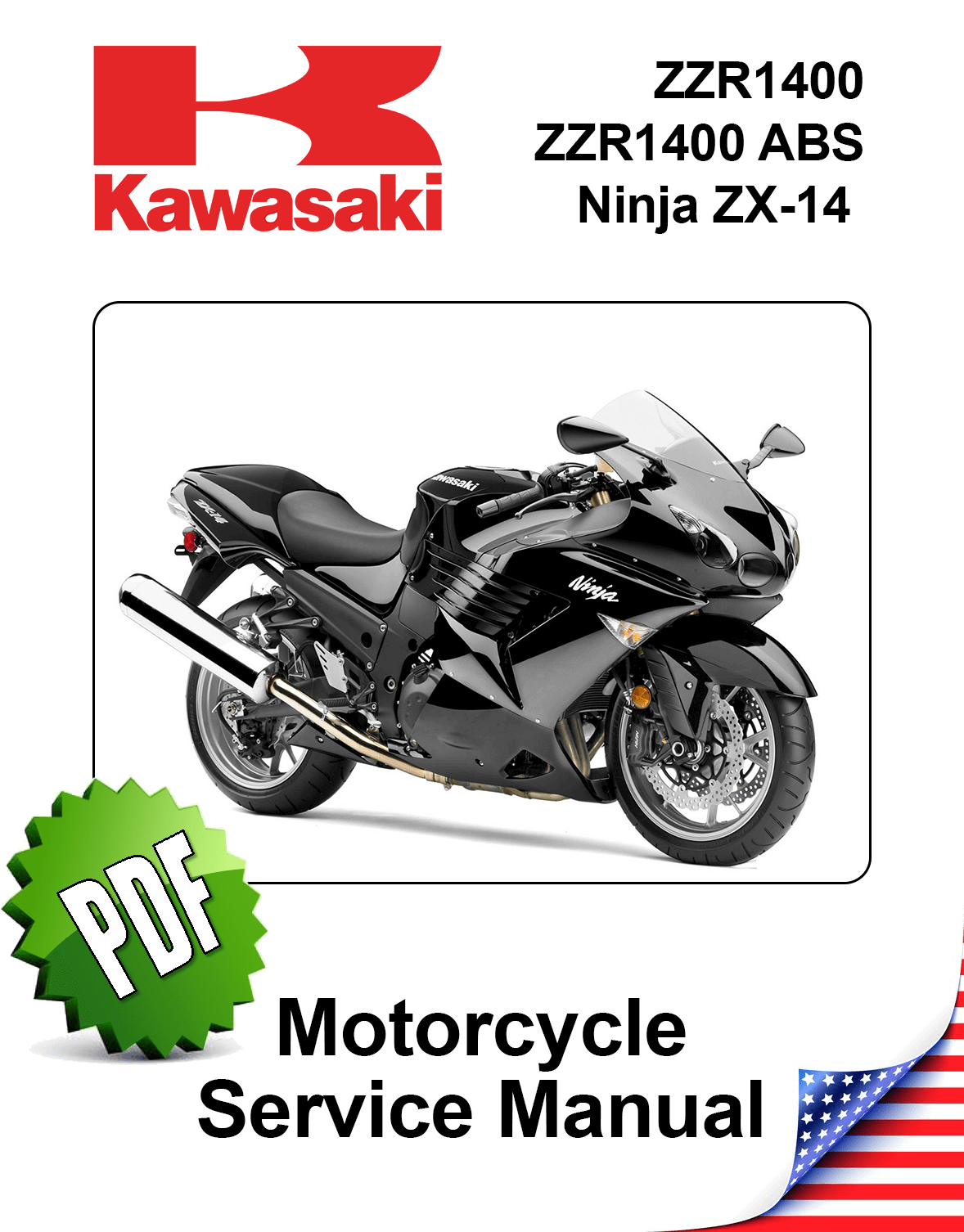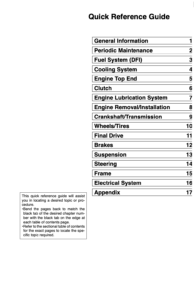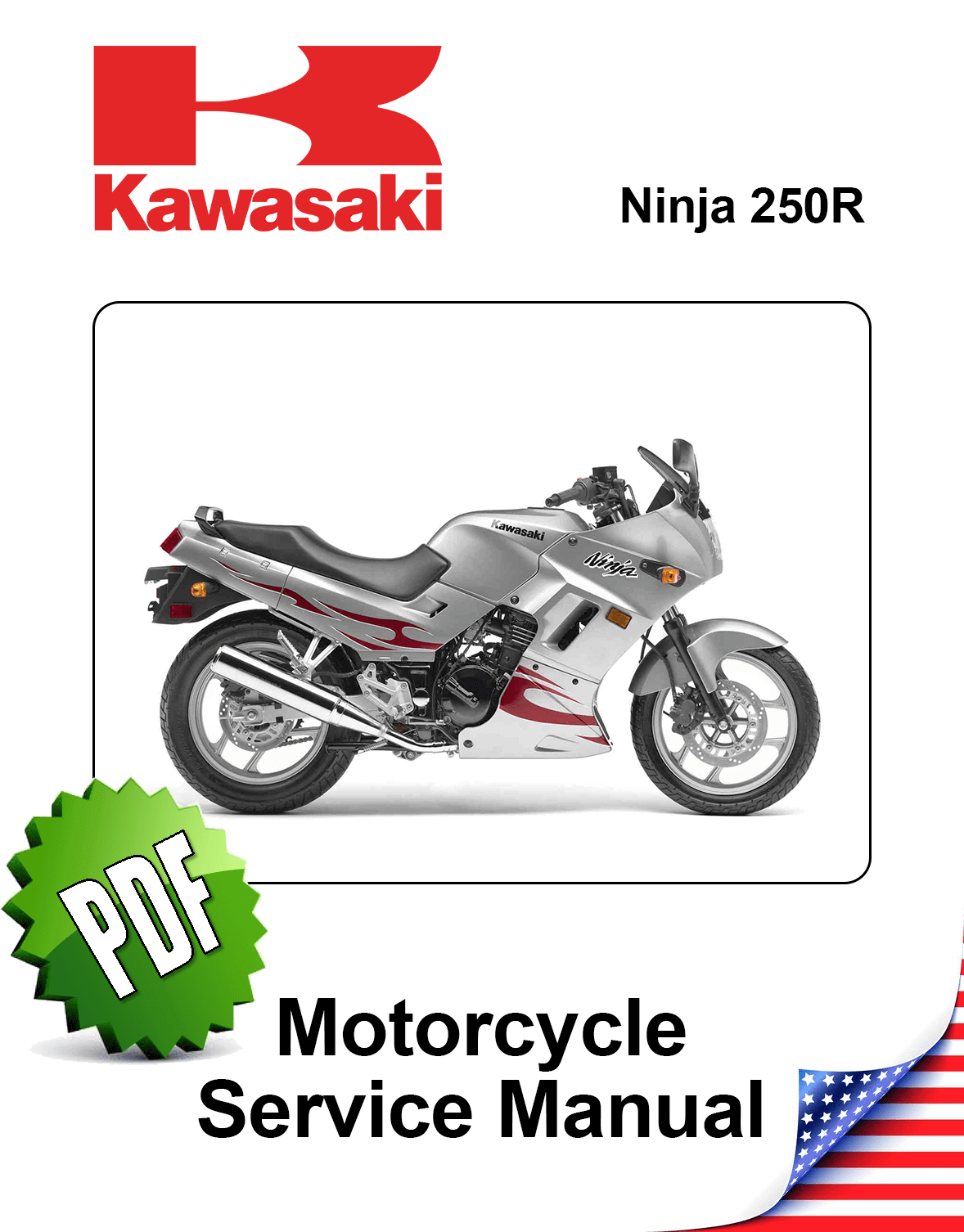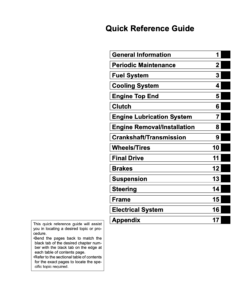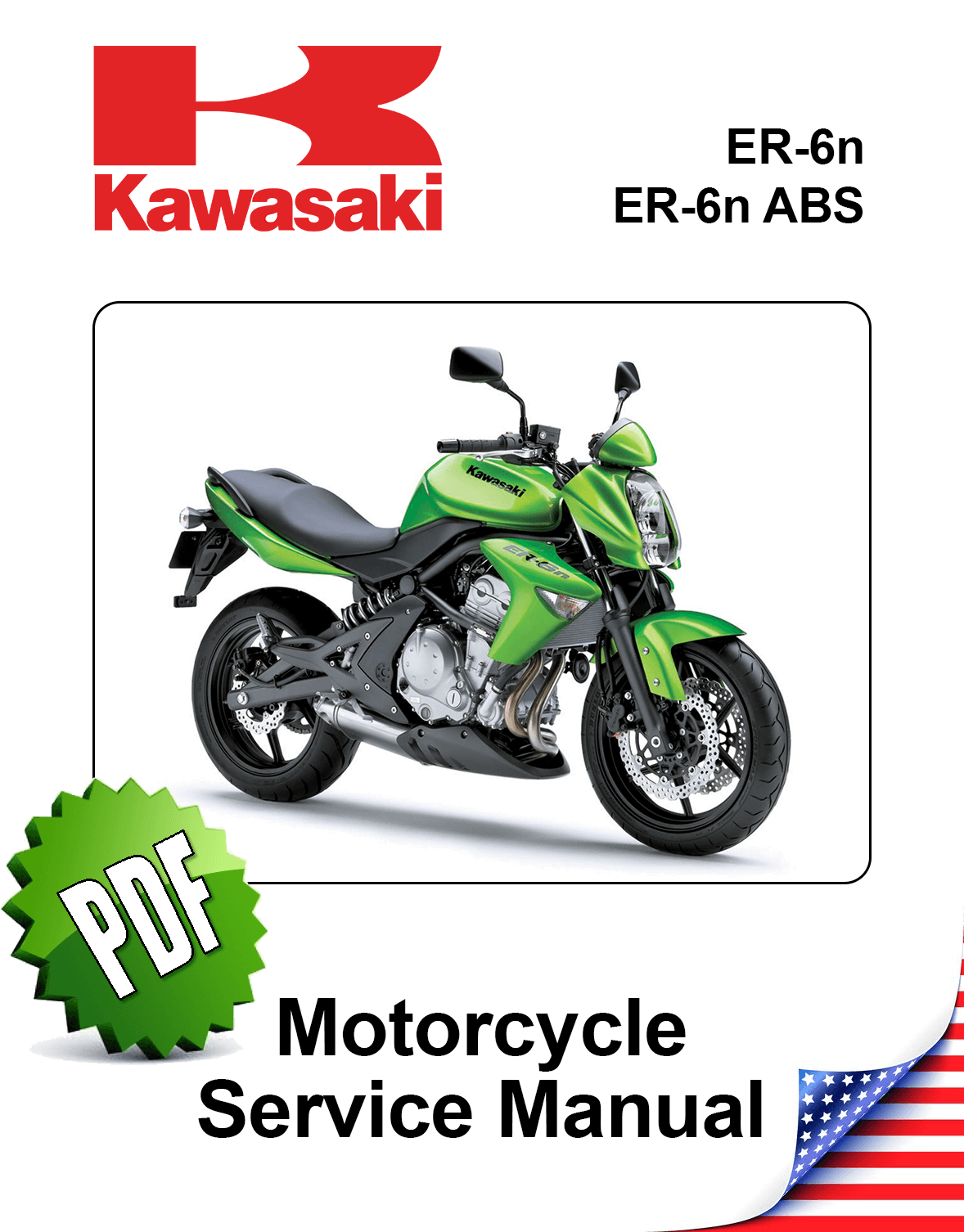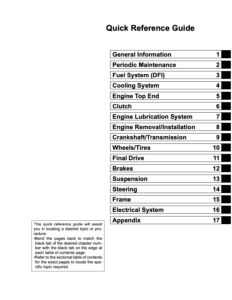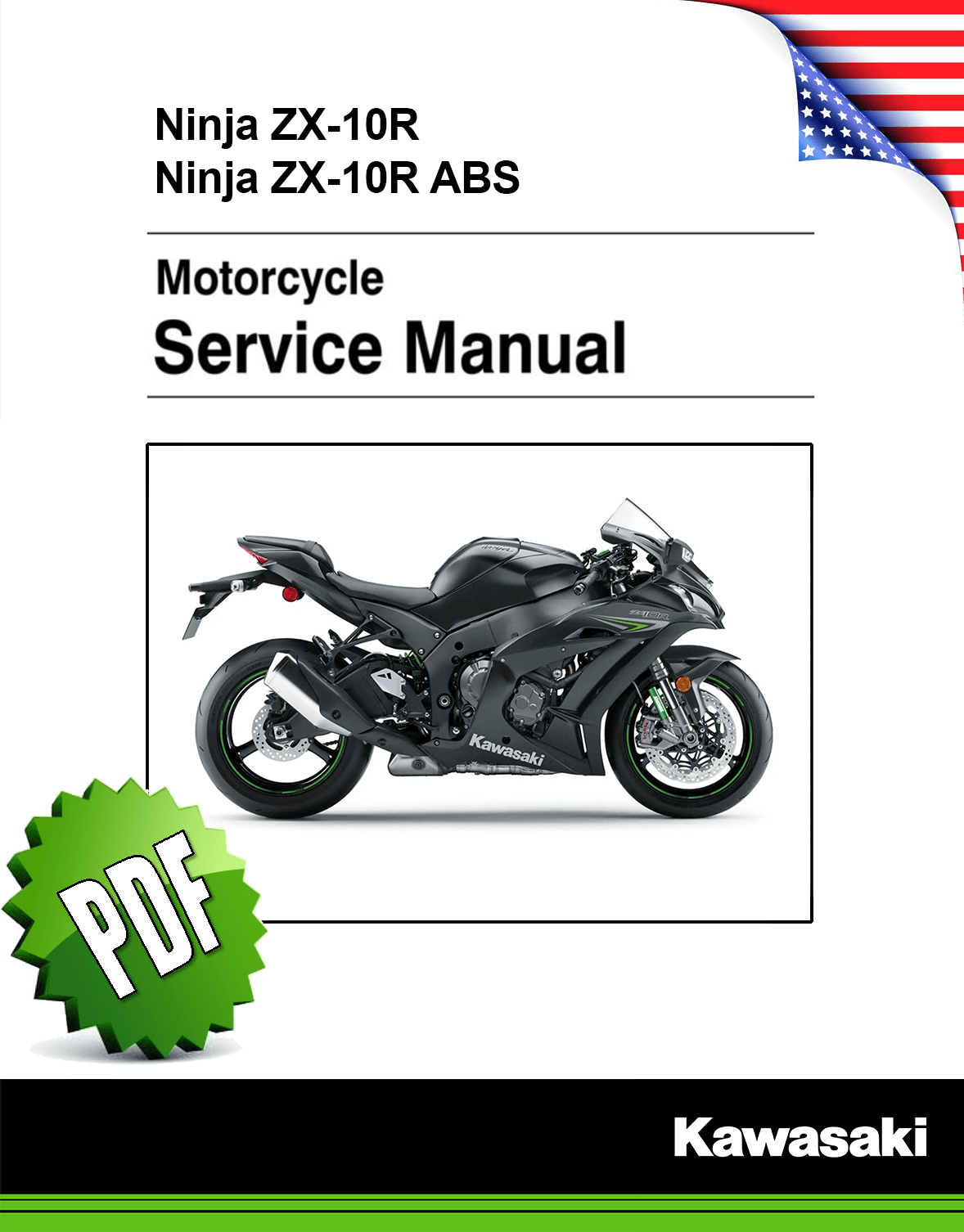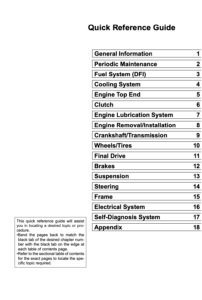Complete PDF version of the Service Manual for the Kawasaki ER-6n. A MUST for every ER-6n owner.
Download: Immediately after payment!
OEM Original factory workshop manual.
Models covered by this manual: 2009 to 2011
Number of pages: 619 pages
Table of contents:
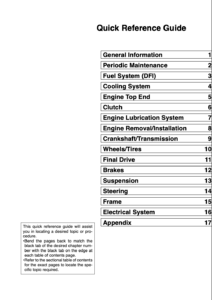
This PDF repair manual can be downloaded right after the payment process in complete, on the device of your choice.
We do not offer printed manuals, for the following reasons:
- it is more eco-friendly to use a digital version
- your manual never gets dirty or greasy
- you can always choose to print the specific page(s) you need to work on your bike
- you receive your manual immediately after payment
- it is searchable
Kawasaki ER-6n
The Kawasaki Ninja 650R, commonly known as the ER-6f or EX-6, is a motorbike marketed by the Japanese manufacturer Kawasaki since 2006. The R suffix is dropped from the name of the 2012 model. It is a middleweight motorbike with a parallel-twin engine that is intended for usage on paved roads. They offer contemporary appearance and features, as well as ergonomic sitting with a low center of gravity. Because the engine has a 180° crankshaft, it has an irregular firing interval of 0° and 540°.
In 2006, the 650R and its naked brother, the ER-6n, were released. The naked ER-6n was not available in North America until the model year 2009. The Ninja 250R and Ninja 500R models previously existing in Kawasaki’s sportbike roster, which also included the Ninja ZX variants. Kawasaki redesigned the Ninja 650R for 2009, with new bodywork, mirrors, gauges, lights, and a new tune on the same 649 cc (39.6 cu in) engine. Along with chassis and minor adjustments, the 2012 Ninja 650 and ER-6n received an all-new bodywork design, as well as a new 2-piece seat assembly, 20mm larger handlebars, and a new tachometer above an LCD display that shows speed, trip meters, fuel consumption, and so on. The new Ninja 650 also has an Economical Riding Indicator, which activates when the bike is using little gasoline. Kawasaki has upgraded the Ninja 650 for 2017 with a new frame trellis type, reduced weight, and improved handling. Its new sharper appearance has replaced the unusual side mount rear shock with a more conventional one, as well as a slipper clutch.
In Europe, the Ninja 650R is marketed as the ER-6f (“f” signifying faired), while the “naked” roadster is marketed as the ER-6n. Kawasaki released the ER-6n in the United States in 2009. The ER-6f varies somewhat from the Ninja 650R in that it comes equipped with passenger handlebars (as does the ER-6n). Furthermore, ABS brakes were made available for both the ER-6n and ER-6f. The Versys is an ER-6 variant that uses many of the same components as the ER-6. In many European nations, the naked ER-6n is more popular than the faired Ninja 650R; but, in other countries, like as Australia and India, the faired Ninja 650R is more popular than the naked ER-6n, becoming the most popular’sports-tourer’ in the Kawasaki portfolio. The ER-6n model has been out of production since 2018, and has been replaced by the Z650 series.
Source: Wikipedia

